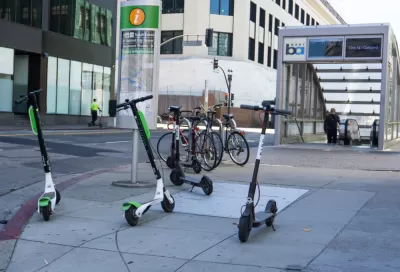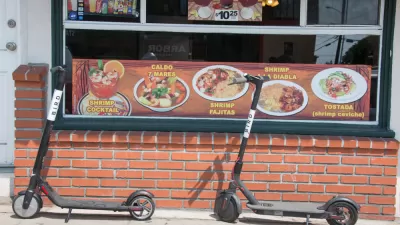Motorists tend to look out for hazards they expect. If tiny vehicles proliferate, including electric scooters, greater safety will follow.

"Two decades ago," and "the very idea of sharing vehicles with strangers would have struck most Americans as odd, even outlandish. Twelve years had to pass after Zipcar was founded in 2000 before even 3% of Americans had tried driving a shared car." Now, as electric scooters become a more and more common sight, drivers may have to get used to navigating the roads with them (not to mention bikes and pedestrians).
With greater numbers comes safety. "Strong empirical evidence suggests that the best thing we can do to ensure the safety of scooter riders is to increase their number. We have no shortage of data about pedestrians and bicyclists, and there's every reason to expect the experience of tiny urban vehicles will follow the pattern."
A psychological "low prevalence effect" underlies that principle. Namely, we tend to devote mental resources to common hazards, and discount rare ones. In places where more people are walking, biking, or scooting, vehicle collisions tend to happen less frequently and are less serious.
In another piece for The Boston Globe, Amy Crawford writes that "if cities and scooters are really going to get along, it will take more than just new regulations — it will take new infrastructure. Sarah Kaufman, associate director of the Rudin Center for Transportation Policy and Management at New York University, argues for expanding cities' networks of bicycle lanes, which she says should be reimagined as pathways for any small, low-speed vehicle, including those we have yet to imagine."
FULL STORY: Tiny Vehicles and the New Safety in Numbers

Alabama: Trump Terminates Settlements for Black Communities Harmed By Raw Sewage
Trump deemed the landmark civil rights agreement “illegal DEI and environmental justice policy.”

Planetizen Federal Action Tracker
A weekly monitor of how Trump’s orders and actions are impacting planners and planning in America.

The 120 Year Old Tiny Home Villages That Sheltered San Francisco’s Earthquake Refugees
More than a century ago, San Francisco mobilized to house thousands of residents displaced by the 1906 earthquake. Could their strategy offer a model for the present?

BLM To Rescind Public Lands Rule
The change will downgrade conservation, once again putting federal land at risk for mining and other extractive uses.

Indy Neighborhood Group Builds Temporary Multi-Use Path
Community members, aided in part by funding from the city, repurposed a vehicle lane to create a protected bike and pedestrian path for the summer season.

Congestion Pricing Drops Holland Tunnel Delays by 65 Percent
New York City’s contentious tolling program has yielded improved traffic and roughly $100 million in revenue for the MTA.
Urban Design for Planners 1: Software Tools
This six-course series explores essential urban design concepts using open source software and equips planners with the tools they need to participate fully in the urban design process.
Planning for Universal Design
Learn the tools for implementing Universal Design in planning regulations.
Clanton & Associates, Inc.
Jessamine County Fiscal Court
Institute for Housing and Urban Development Studies (IHS)
City of Grandview
Harvard GSD Executive Education
Toledo-Lucas County Plan Commissions
Salt Lake City
NYU Wagner Graduate School of Public Service




























